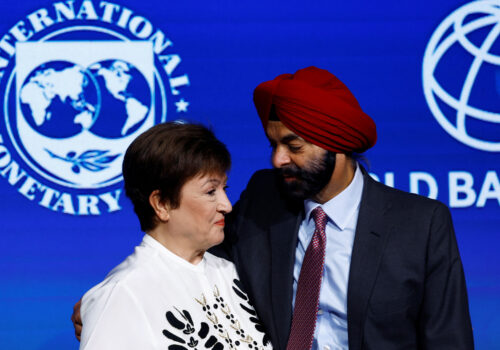Central bank digital currency (CBDC) is a digital version of cash issued by a central bank to be used either by individual consumers (retail CBDC, or rCBDC) or financial institutions (wholesale CBDC, or wCBDC). At the time of writing, more than one hundred central banks are pursuing CBDCs for a variety of motives: improving payments efficiency and upgrading existing financial infrastructure, increasing financial inclusion, and enhancing monetary policy transmission. CBDCs allow their developers unparalleled discretion in terms of their constituting features—inter alia, choice of design, accessibility, and programmability. CBDCs present unique opportunities and challenges for policymakers, regulators, market participants, and individuals, making this a transformational moment in the history of money.
International financial institutions (IFIs) have taken note of their member countries’ burgeoning interest in CBDCs. IFI mandates and responsibilities intersect with CBDCs in several important ways. First, CBDCs may present new financial-stability challenges. This brings CBDC-related developments under the purview of the International Monetary Fund (IMF). Second, CBDCs’ development potential (including financial inclusion)—a major force driving adoption in emerging markets and developing economies (EMDEs)—makes them relevant for the World Bank. Finally, the Bank for International Settlements(BIS), with its standard-setting committees, is a natural forum for discussion on issues related to technology and regulation around CBDC. Recognizing the intersection of CBDCs and their mandates, and spurred by the demands of member countries, these IFIs have been rapidly developing workstreams on CBDC.
Collectively, IFIs’ efforts constitute an emerging global governance architecture for CBDCs. But is that emerging architecture appropriate, effective, and sufficient to manage the global transition to digital money? This report is an attempt to answer this question, with a focus on three domains: financial stability, development and financial inclusion, and global payment systems. One chapter is dedicated to each of these issues. Each chapter considers the risks, challenges, and opportunities associated with CBDC development, and discusses the mandates, activities, and plans of the international financial institutions. Finally, recommendations are made in each area to improve the global governance architecture for CBDCs.
Greg Brownstein is a Bretton Woods 2.0 Fellow with the GeoEconomics Center.
Utsav Saksena is a Bretton Woods 2.0 Fellow with the GeoEconomics Center. He is also a Research Fellow (Macro-Finance) at the National Institute of Public Finance (NIPFP), an autonomous institute under the Ministry of Finance, Government of India.
Related content

At the intersection of economics, finance, and foreign policy, the GeoEconomics Center is a translation hub with the goal of helping shape a better global economic future.
Image: A woman gets her phone's QR code of the digital payment services scanned at a food shop, following the coronavirus disease (COVID-19) outbreak, in Shanghai, China October 10, 2020. REUTERS/Aly Song


